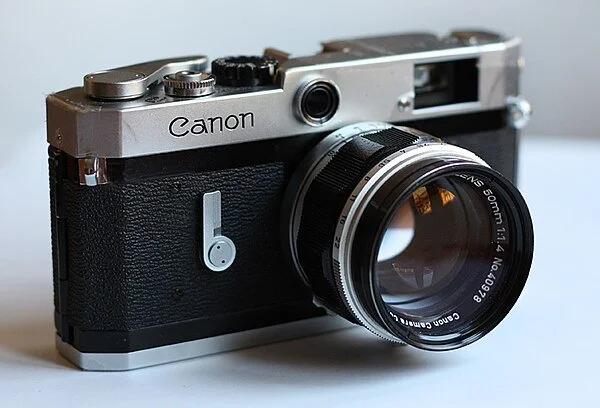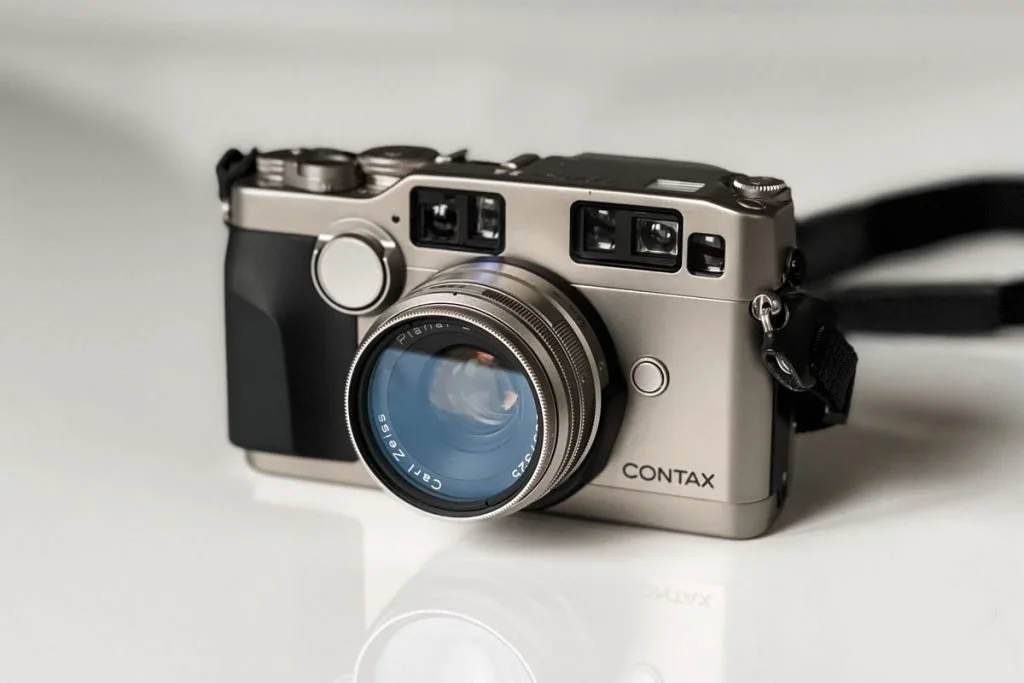Top 8 Rangefinder Film Cameras 2025
SLR vs. Rangefinder: Which One is Right for You?
When choosing a 35mm film camera, one of the biggest decisions you'll face is whether to go with a Single-Lens Reflex (SLR)or a rangefinder. Both have distinct advantages and drawbacks, making them better suited for different types of photographers.
SLRs vs. Rangefinders: The Key Differences
SLR cameras use a mirror and prism system that allows you to see exactly what the film lens sees through the viewfinder. When you press the shutter, the mirror flips up, exposing the film.
Rangefinder cameras lack a mirror and instead use a dual image focusing system. The viewfinder is separate from the 35mm lens, and you achieve focus by aligning two superimposed images.
Pros & Cons of SLRs
Pros:
Accurate framing: what you see through the viewfinder is exactly what you capture on film.
Works well with telephoto and macro film lenses.
Usually more affordable and widely available than 35mm rangefinders.
Cons:
Larger and heavier film cameras due to the mirror and prism.
The mirror movement creates vibration, slightly affecting sharpness, especially at slower shutter speeds.
Louder shutter sound, making it less discreet for street or documentary film photography.
Pros & Cons of Rangefinders
Pros:
Compact and lightweight, making them perfect for travel and street photography.
No mirror movement, meaning sharper handheld film shots at slower shutter speeds.
Quiet operation, allowing for discreet shooting in public or candid situations.
Bright and clear viewfinder, with no blackout when taking a film photo.
Cons:
Parallax error: because the viewfinder is separate from the 35mm lens, framing can be slightly inaccurate, especially at close distances.
Limited 35mm lens compatibility, as rangefinders generally don’t support telephoto or macro film lenses.
Manual focusing requires practice, especially for film photographers new to rangefinders.
Who Should Choose a Rangefinder?
Film photographers who prioritize portability, discreet shooting, and sharp handheld images will benefit from using rangefinder film cameras. They are especially popular among street photographers, documentary shooters, and travel photographers who need a lightweight 35mm camera with a quiet shutter.
Now, let's explore the top 8 rangefinder film cameras available in 2025!
1. Leica M6
The Leica M6 is the obvious choice: one of the most sought after rangefinder film cameras of all time. First introduced in the 1980s, it remains a favorite due to its full manual controls, bright viewfinder, and legendary Leica build quality. Unlike earlier Leica models, the M6 features a built in light meter, making exposure adjustments much easier without relying on an external meter.
Because of its Leica M-mount compatibility, film photographers have access to some of the sharpest and most well engineered 35mm lenses ever made. The M6’s compact size, precise focusing system, and quiet shutter make it an excellent choice for street and travel photographers who need a reliable and discreet 35mm rangefinder camera.
2. Leica M4-P
The Leica M4-P is an underrated yet highly capable rangefinder film camera that bridges the gap between the fully mechanical M4 and the metered M6. It retains the M4’s robust build quality while introducing six framelines, allowing for better lens compatibility straight out of the box.
Built between 1980 and 1987, the M4-P was the first Leica model to feature framelines for 28mm lenses, making it an excellent choice for wide angle photographers. Unlike the M6, it does not have a built in light meter, but its fully mechanical operation ensures reliability in any shooting condition. Many professionals consider the M4-P a workhorse rangefinder with a more affordable price tag compared to other Leica models.
3. Canon P
The Canon P (short for "Populaire") is one of the best entry level rangefinder film cameras for photographers who want a Leica like experience at a fraction of the cost. Released in 1959, it features a large, bright viewfinder, a metal body, and Leica Thread Mount (LTM) compatibility, meaning it can be used with a wide variety of lenses from Canon, Leica, and other manufacturers.
One of the best aspects of the Canon P is its simple and intuitive operation. Unlike some rangefinders with cluttered or dim viewfinders, the Canon P provides an uncluttered, high-contrast experience, making focusing quick and accurate. Because it is fully mechanical, it requires no batteries, making it a great option for film photographers who enjoy complete manual control over their exposures.
4. Voigtländer Bessa R2A/R3A
The Voigtländer Bessa R2A and R3A are among the best modern rangefinder film cameras, combining the classic rangefinder experience with modern conveniences like aperture-priority automatic exposure. Unlike traditional Leica film cameras, these models feature a built in electronic light meter and an LED display inside the viewfinder to help guide exposure settings.
The Bessa R2A features a 0.7x magnification viewfinder, making it ideal for wider lenses, while the R3A has a 1.0x magnification for those who prefer a 50mm or longer 35mm lens. Both film cameras use the Leica M-mount, allowing film photographers to use premium Leica, Zeiss, and Voigtländer lenses. These 35mm film cameras are perfect for film photographers who want the rangefinder experience without the high cost of a Leica.
5. Contax G2
The Contax G2 is a rare autofocus rangefinder, making it unique among traditional manual focus rangefinder film cameras. Built by Kyocera in the 1990s, the G2 is known for its fast and precise autofocus system, making it a pretty attractive option for film, photographers who want the rangefinder experience with added speed and convenience.
One of its biggest selling points is the availability of Contax's legendary Carl Zeiss lenses, which deliver exceptional sharpness and color rendition. The G2 features electronic shutter control, auto exposure, and a highly accurate light meter, making it a perfect modern rangefinder for those who prefer automation in a film camera over manual settings.
Photo ©RetroCameraMall via Etsy
6. Nikon S3
The Nikon S3 is a beautifully crafted rangefinder film camera that was originally introduced in the late 1950s as Nikon’s answer to Leica. Built with a high quality metal body and precise mechanics, the S3 was widely used by photojournalists and professionals during its time.
The viewfinder is bright and features multiple framelines, allowing for quick composition changes when using different lenses. Unlike modern rangefinders, the Nikon S3 lacks a built-in meter, meaning film photographers must rely on external light meters or experience in manual exposure settings. Despite this, its exceptional build quality and smooth focusing system make it a joy to use for serious film photographers.
7. Yashica Electro 35 GSN
The Yashica Electro 35 GSN is one of the best budget friendly rangefinder film cameras for photographers who want an easy to use, fully functional rangefinder without the high cost of a Leica.
It features aperture-priority automatic exposure, meaning it will set the correct shutter speed for you based on your aperture choice. The fast 45mm f/1.7 lens is incredibly sharp, making it great for low light shooting and portrait film photography.
8. Minolta CLE
The Minolta CLE is one of the most compact Leica M-mount rangefinders ever made. It features automatic exposure, a bright viewfinder, and compatibility with Leica, Minolta, and Voigtländer lenses. It remains a lightweight, discreet option for travel and everyday film photography.
Photo via ©leitz-auction.com








